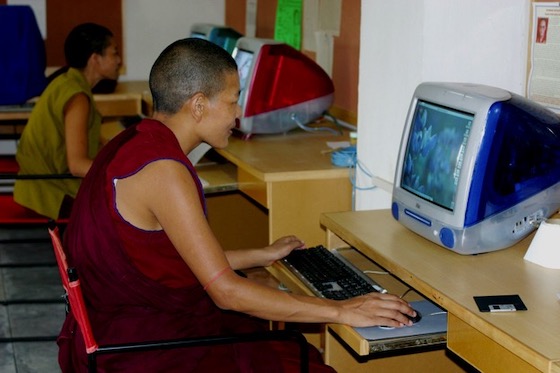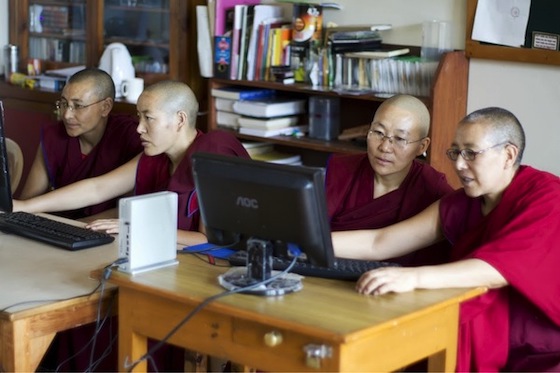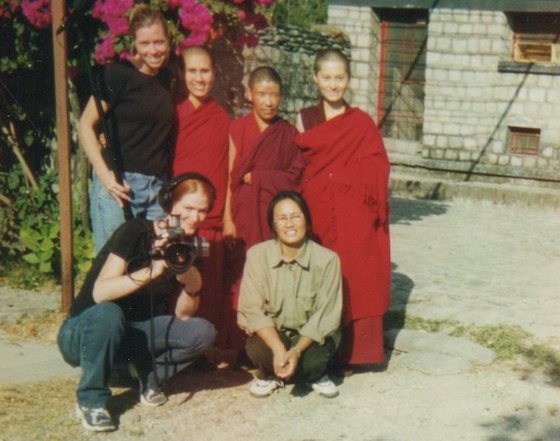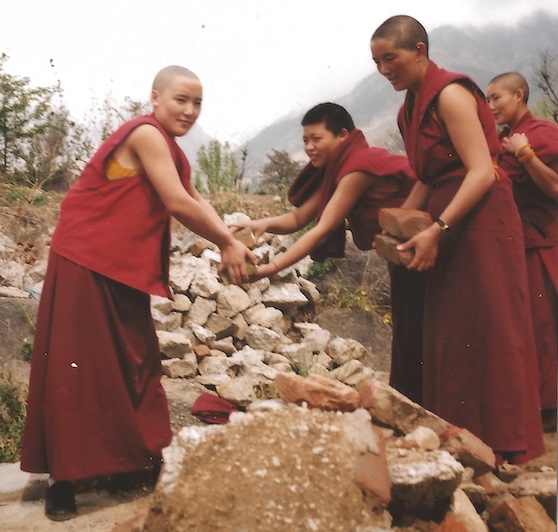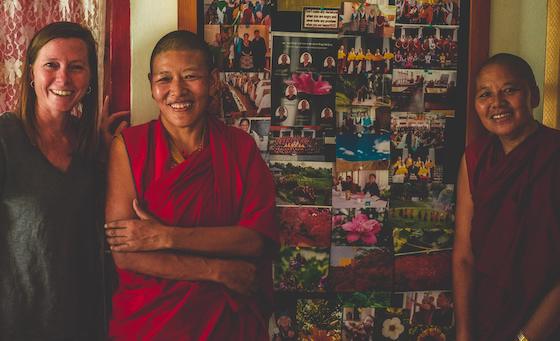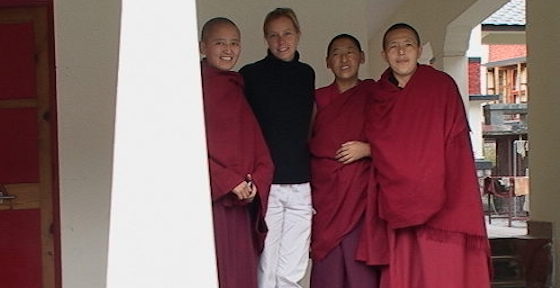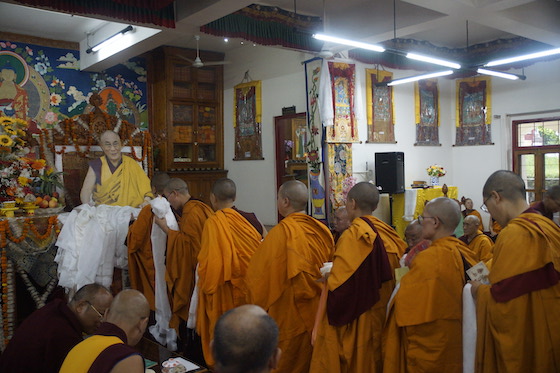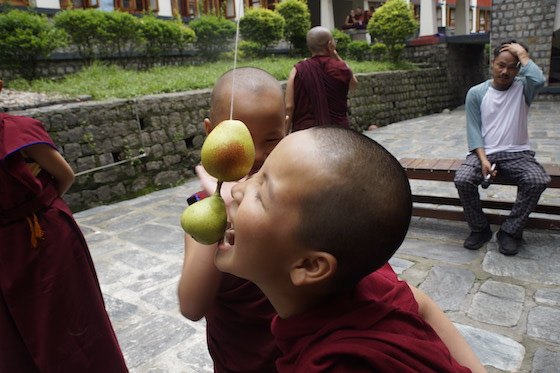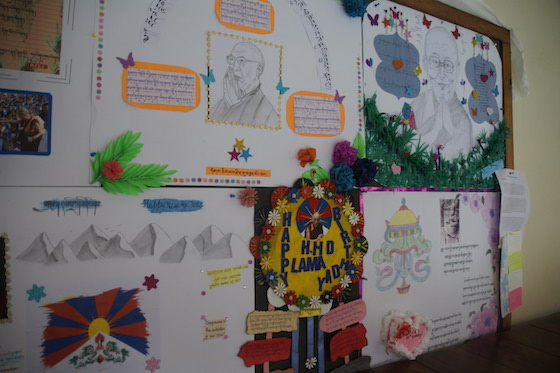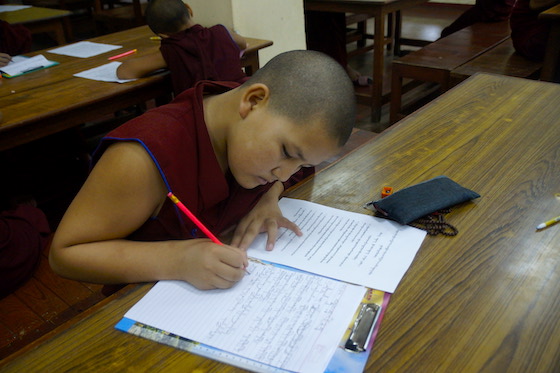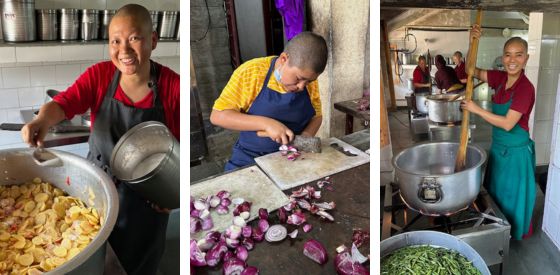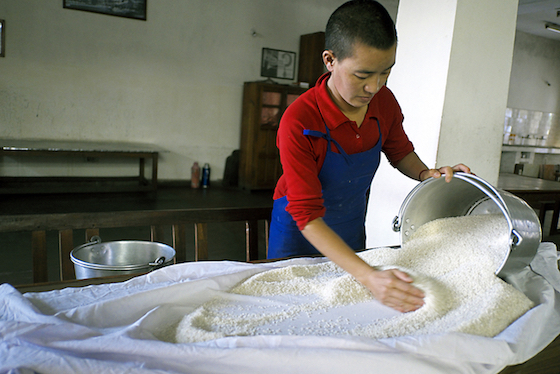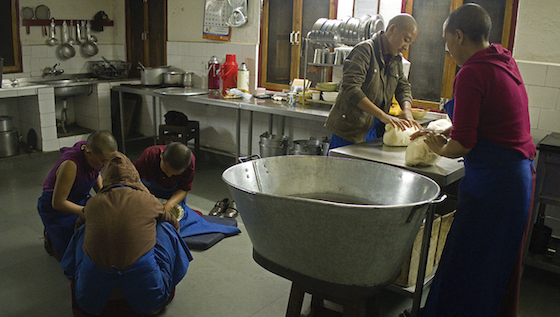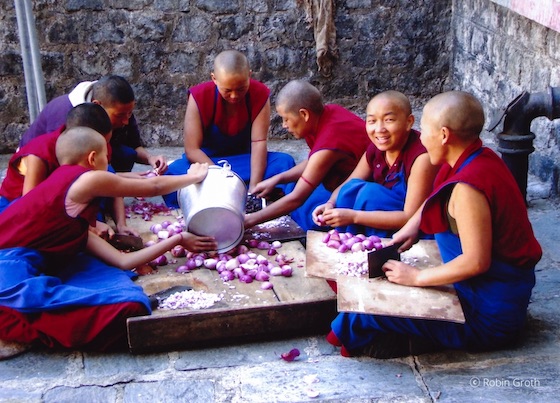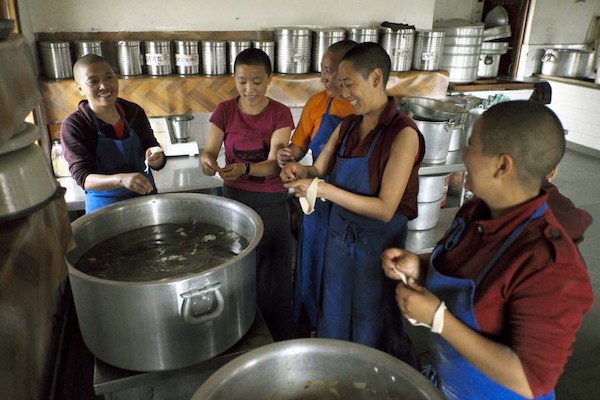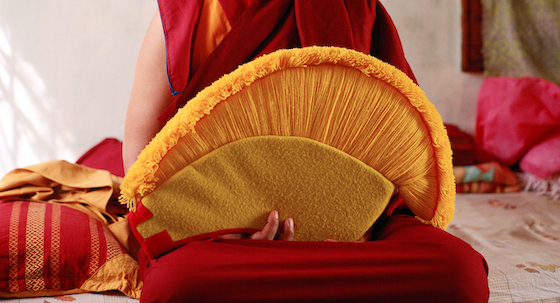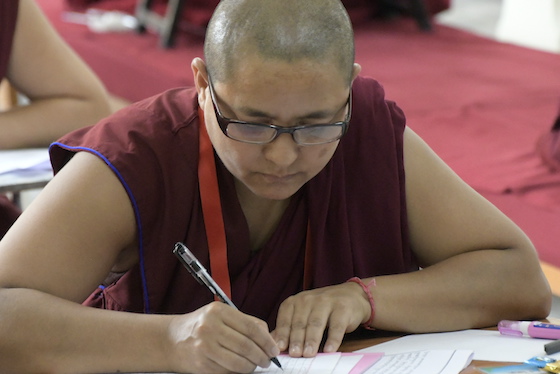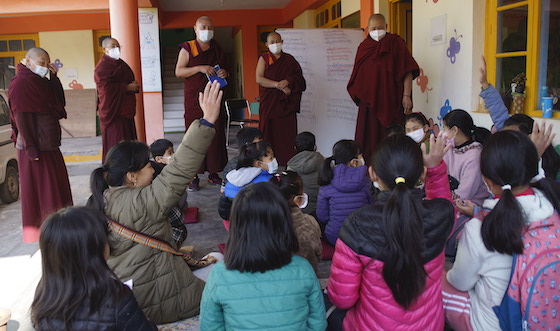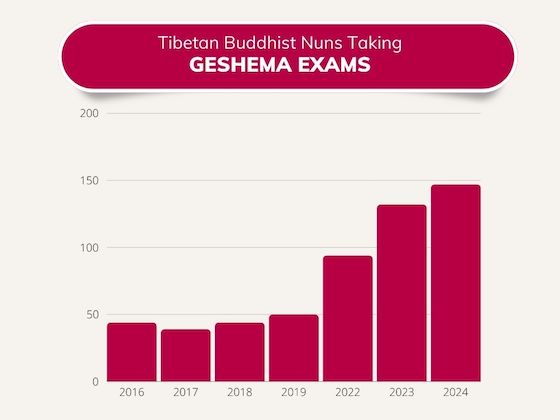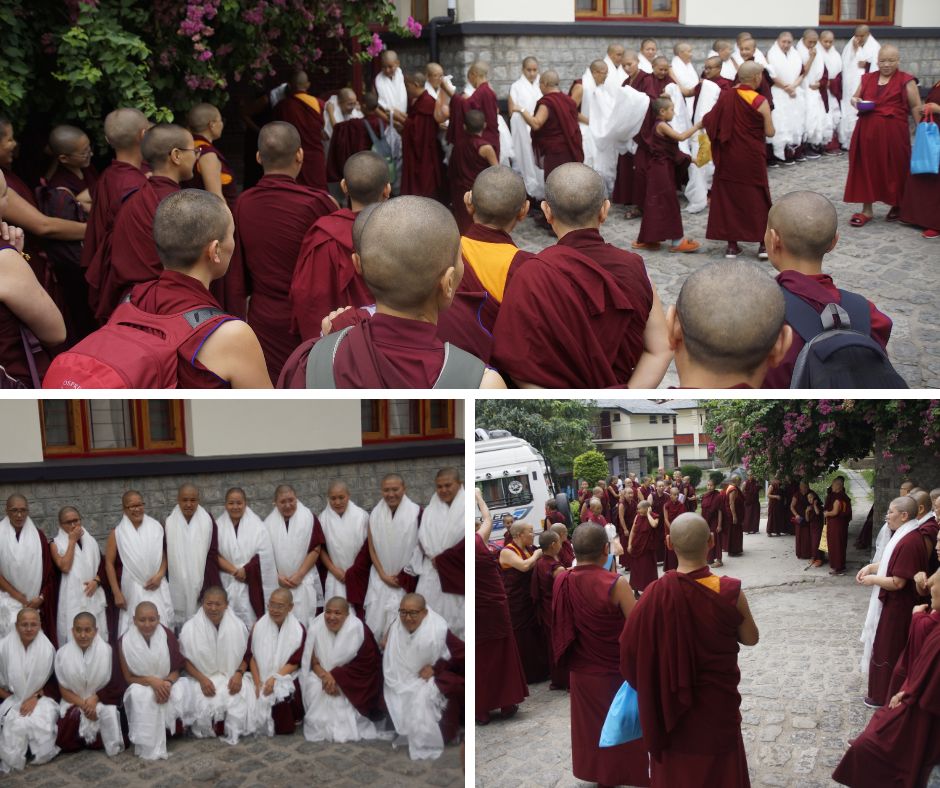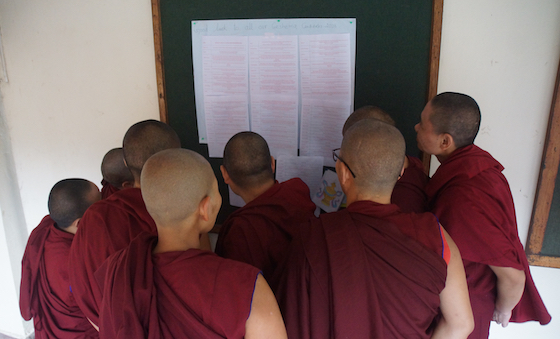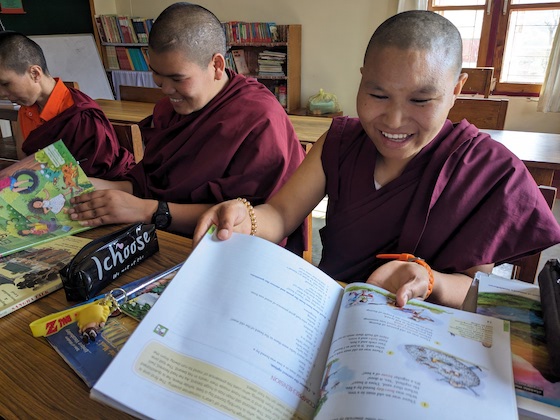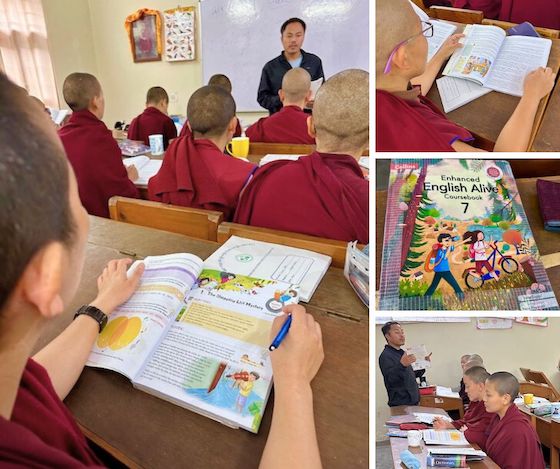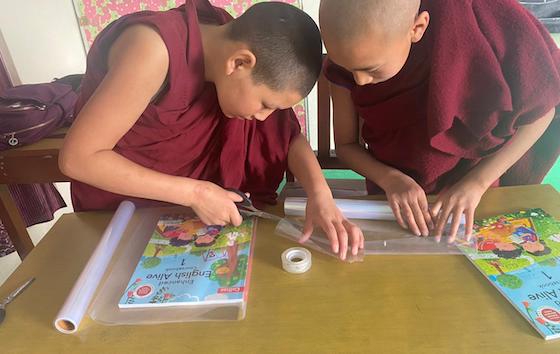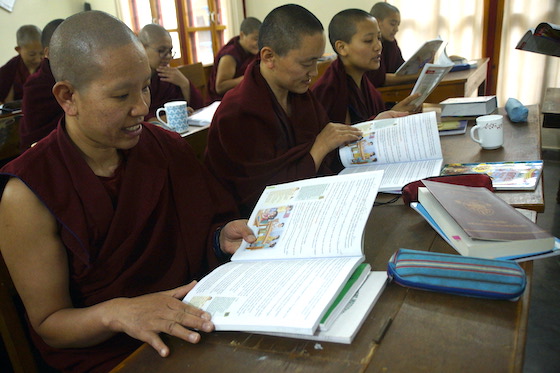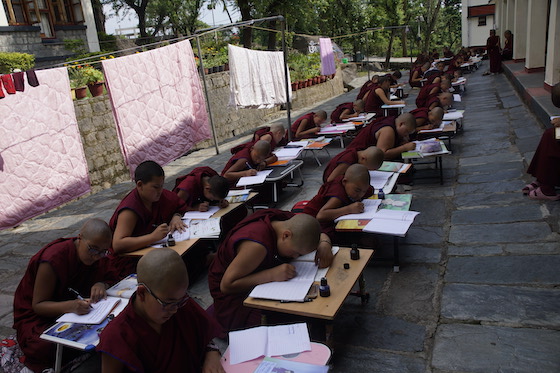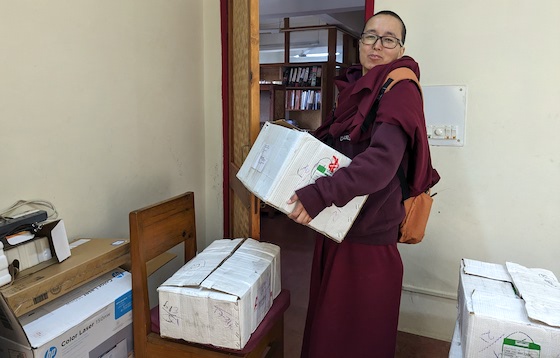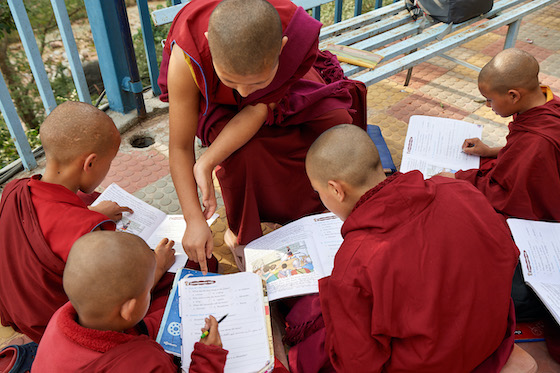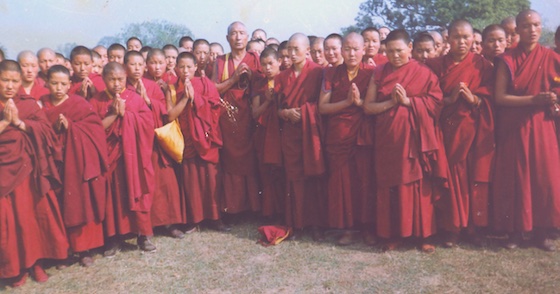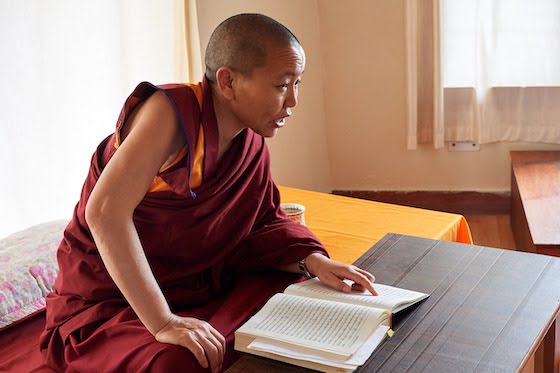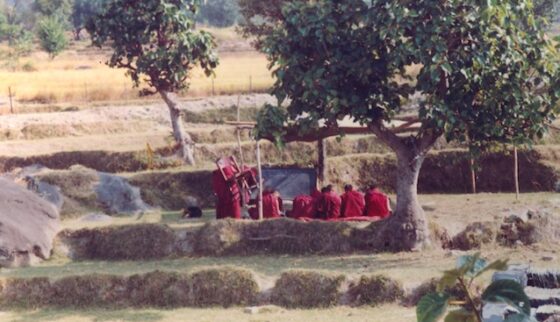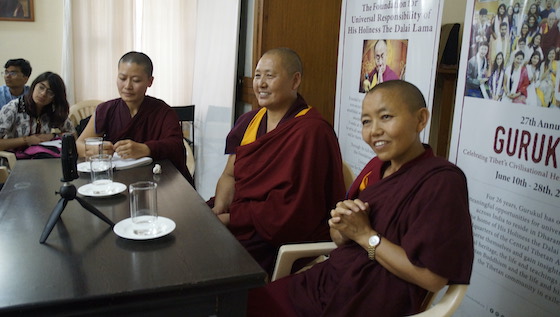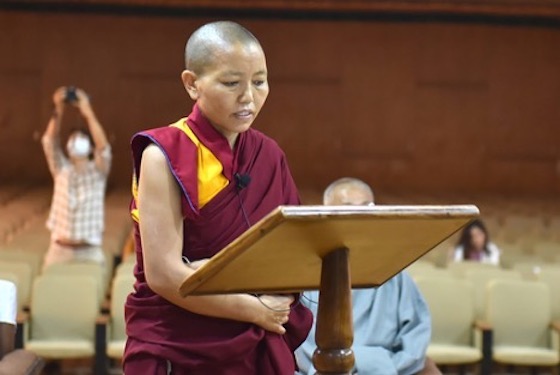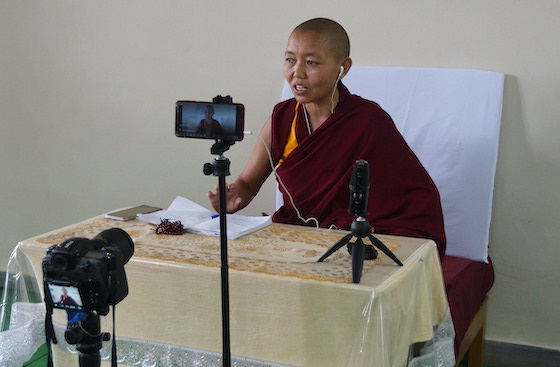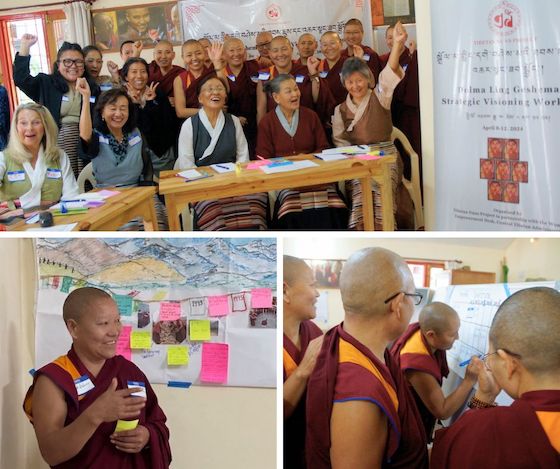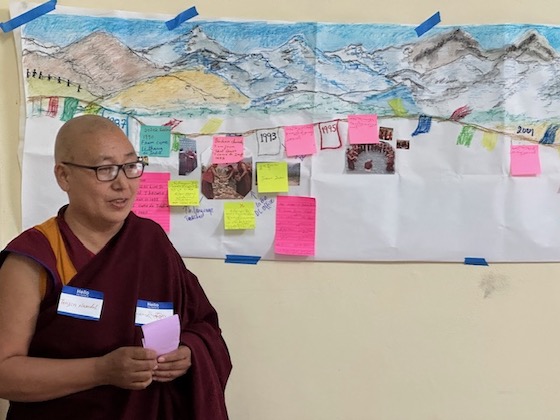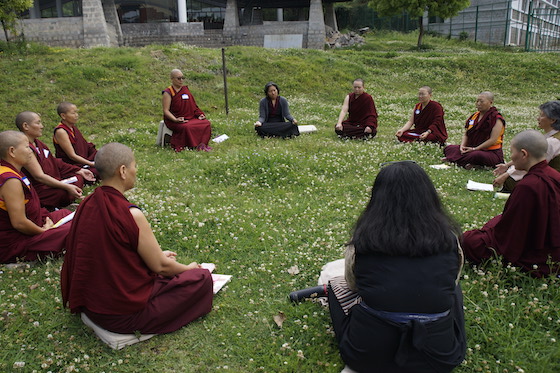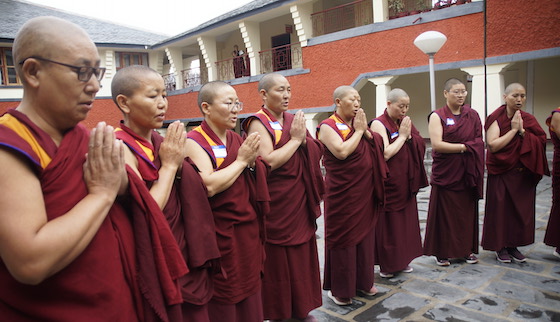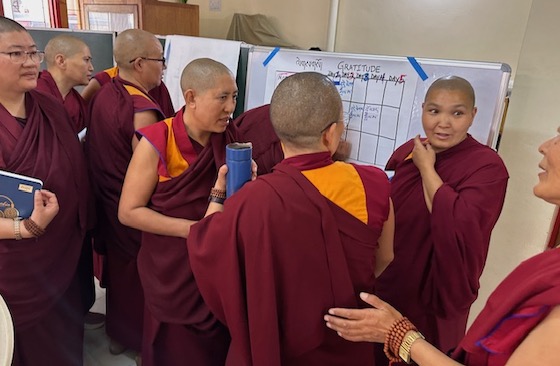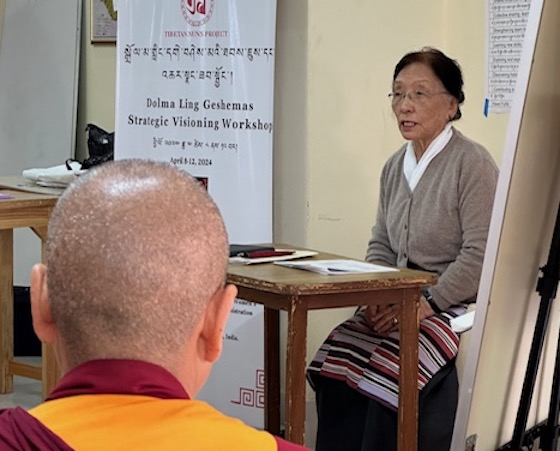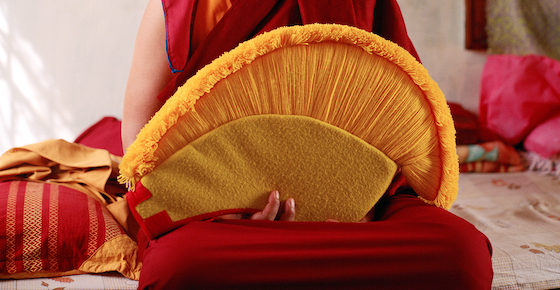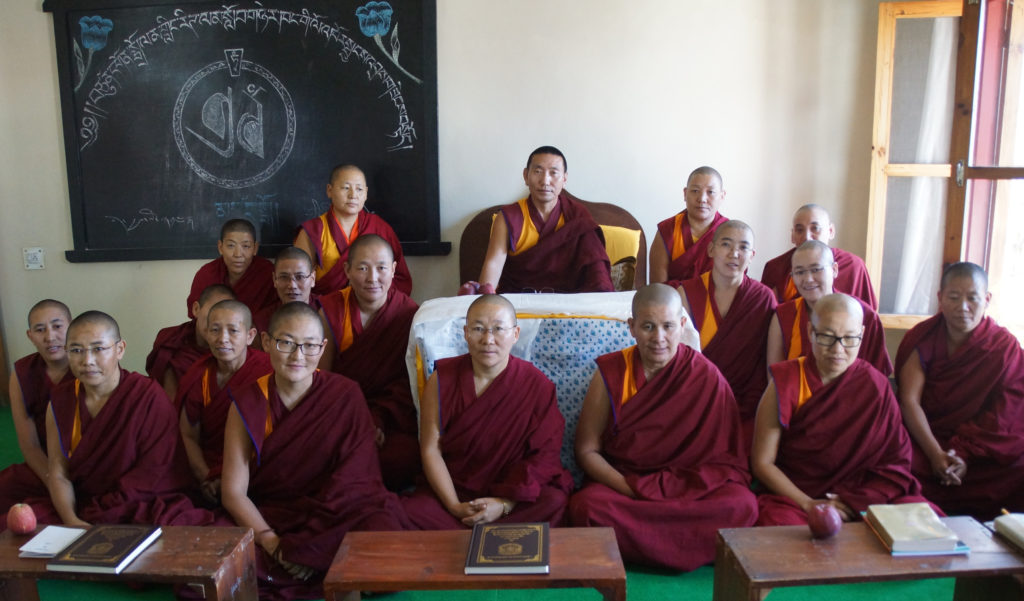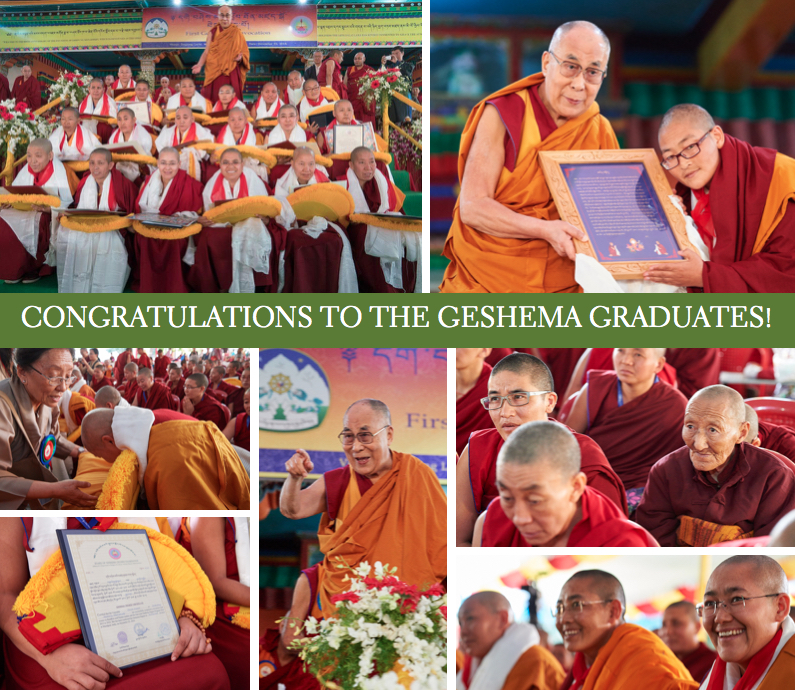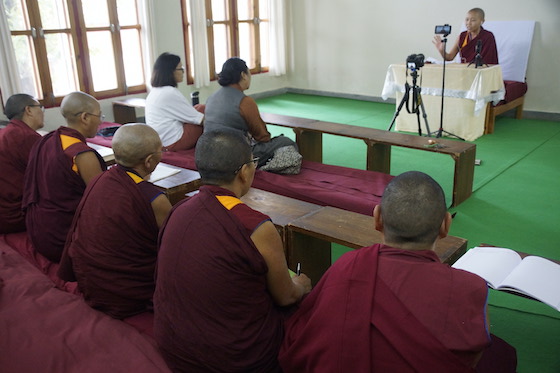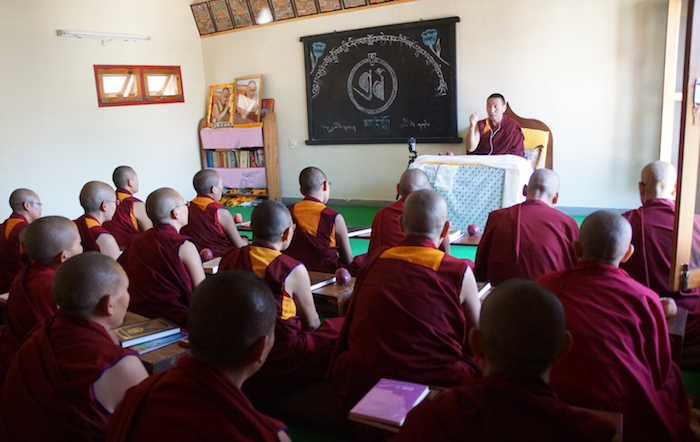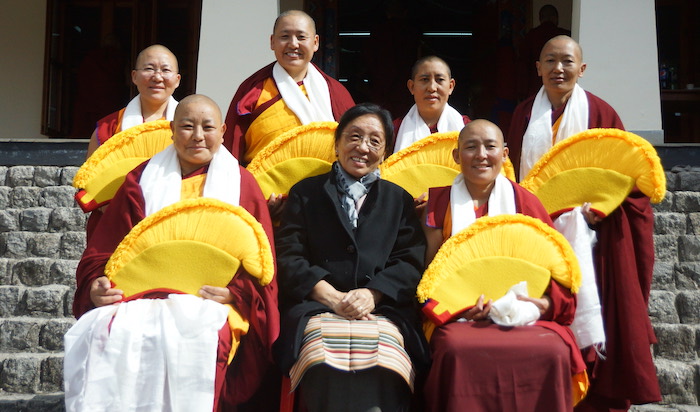This summer Geshema Delek Wangmo, a teacher at Dolma Ling Nunnery and Institute, was a special guest at Sravasti Abbey in Washington State for a one-month residency.

Sravasti Abbey in Washington State welcomes Geshema Delek Wangmo. Born in Tibet in 1970 to a nomadic family, Geshema Delek Wangmo was illiterate when she was ordained as a Buddhist nun at 15. She now lives and teaches at Dolma Ling Nunnery and Institute in India. Photo courtesy of Sravasti Abbey.
Sravasti Abbey was founded in 2003 by the author, teacher, and fully ordained nun Venerable Thubten Chodron. The abbey follows Tibetan Buddhism in the tradition of His Holiness the Dalai Lama. It is situated on 300 acres of forest and meadows outside Newport, Washington, near the Idaho state line.
On August 11th, Sravasti Abbey held a special event with Geshema Delek Wangmo that people could attend in person or online via YouTube. You can see the talk here.
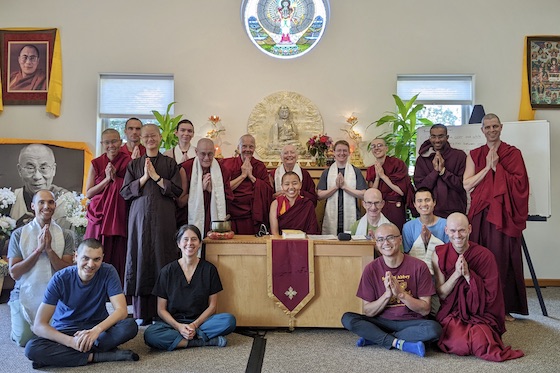
Geshema Delek Wangmo had a one-month residency at Sravasti Abbey in Washington State and gave a public talk on August 11, 2024. Photo courtesy of Sravasti Abbey.
Geshema Delek Wangmo’s story is a tale of faith, courage, resilience, purpose, and tenacity. Her public talk, in English, related to her life as a Tibetan Buddhist nun and her monastic education. She spoke about her role as a teacher of other nuns and her aspirations for Tibetan Buddhism in the future.
Geshema Delek Wangmo was one of the first Tibetan Buddhist nuns to complete the rigorous Geshema degree — equivalent to a doctorate in Tibetan Buddhist philosophy — once reserved for monks only.
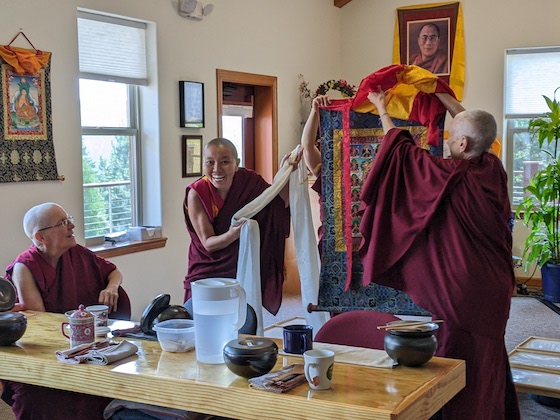
This was the first trip to the West by Geshema Delek Wangmo, a Buddhist scholar, practitioner, and teacher from Dolma Ling Nunnery and Institute in India. Photo courtesy of Sravasti Abbey.
Geshema Delek Wangmo’s time at the Abbey was intended to be a rich cultural and educational exchange. She practiced her English skills and helped some Abbey community members build their spoken Tibetan abilities. She learned about Buddhist monasticism in the West by attending sessions of the Abbey’s annual Exploring Monastic Life program.
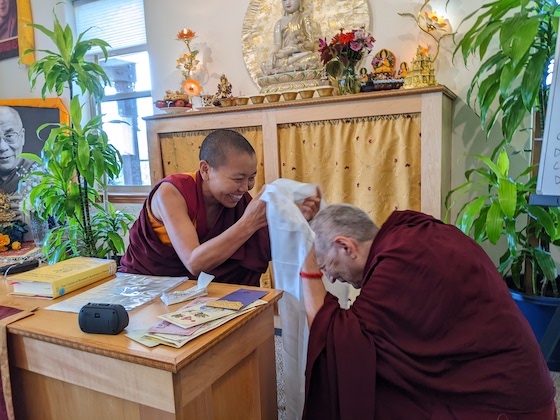
In Tibet, many nuns like Delek Wangmo did not have access to education. Her journey from illiteracy to a respected teacher has been one of faith, courage, and diligence. Photo August 11, 2024 courtesy of Sravasti Abbey.
She also offered a course in English on Buddhist Reasoning and Debate, the Tibetan pedagogical method for sharpening and deepening insight.
Abbess Venerable Thubten Chodron has long been a proponent of advanced education for Tibetan nuns and Sravasti Abbey is a long-time supporter of the Tibetan Nuns Project. While Abbey residents have had the honor to receive profound teachings from a great number of Tibetan lamas and geshes, it is a historically significant next step to also host a female Tibetan scholar to teach the Western sangha.
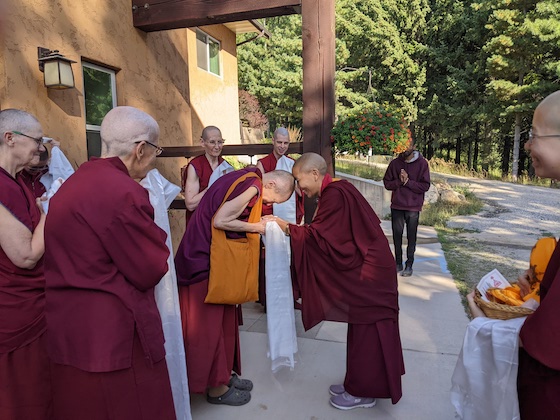
Saying goodbye. The nuns at Dolma Ling, where Geshema Delek Wangmo teaches, had summer exams so she was able to a break from teaching until August 19th. She helped to build Dolma Ling, one of the first Tibetan nunneries in India, brick by brick, over 30 years ago. Photo courtesy of Sravasti Abbey.
An Incredible Journey
Born in 1970 in Litang in the Kham region of eastern Tibet, Delek Wangmo was ordained at 15 with Tenzin Delek Rinpoche. Her village, Detsa, did not have a school and she spent most of her time tending animals with her nomadic family.
When she was 19, Tenzin Delek Rinpoche led her and other nuns on a pilgrimage from their home province to Lhasa, where the Dalai Lama’s Potala Palace and other holy sites are located. Not only was this a 950-mile trek through mountains, but the group prostrated the entire way. It took one and a half years.
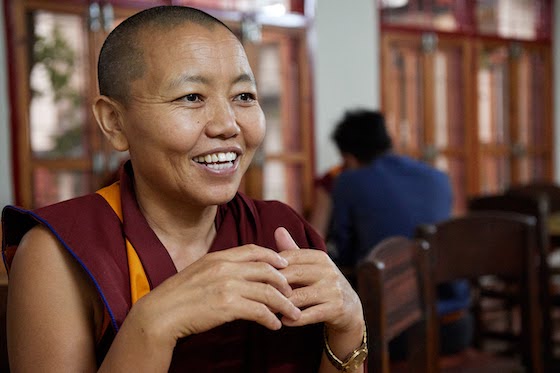
Portrait of Geshema Delek Wangmo taken at Dolma Ling Nunnery in 2022 by Olivier Adam
However, when they arrived, the group was denied entry into Lhasa by the Chinese authorities. The journey was not wasted: along the way, she had begun her education and learned the Tibetan alphabet for the first time.
The large group of nuns headed south, eventually entering India and connecting with His Holiness the Dalai Lama in Varanasi.
Improving the Situation for Nuns
Unfortunately, there were few nunneries in India and no space for the new nuns. Soon, the Tibetan Nuns Project was formed and began the process of building two facilities, Shugsep and Dolma Ling, both near Dharamsala.
In 1994, Delek Wangmo and other nuns were able to move into Dolma Ling, which was subsequently inaugurated by His Holiness the Dalai Lama in 2005. Not only did Dolma Ling provide much-needed housing and living facilities, but it was dedicated specifically to higher Buddhist education for nuns.
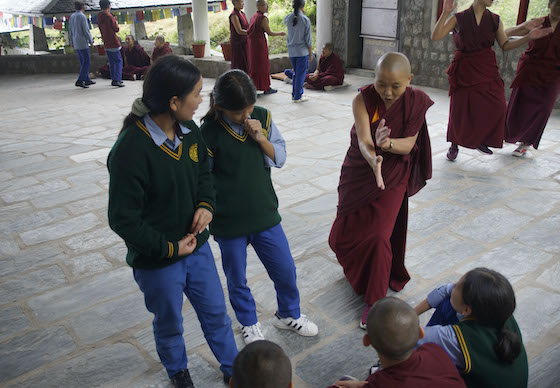
Geshema Delek Wangmo teaching Tibetan Children’s Village (TCV) students about monastic debate in September 2023.
In Tibet, many nuns like Delek Wangmo did not have access to education. Dolma Ling provides a 17-year curriculum, comparable to what has traditionally been available to monks. With these educational opportunities and the support of His Holiness the Dalai Lama, the Geshema degree was offered in 2012.
The Geshema degree is equivalent to the Geshe degree, with the “ma” indicating it is awarded to women. The Geshe degree is roughly equivalent to a PhD in Tibetan Buddhist philosophy, requiring decades of study, extensive exams, and public debate sessions. The monastics who earn this degree become teachers, abbots, and other leaders within Tibetan Buddhism.
Delek Wangmo became Geshema Delek Wangmo in 2017, part of the second group of nuns to complete their exams and earn their degrees. She was then part of the first group of nuns allowed to study at Gyuto Tantric University, also a part of the traditional education for monks.
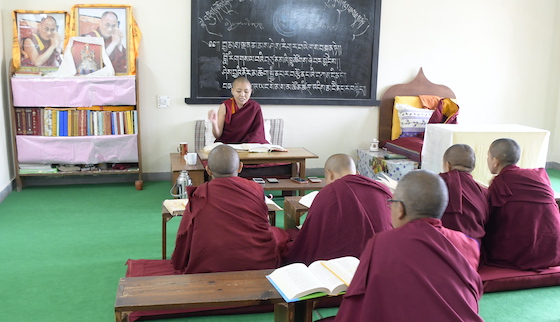
Delek Wangmo earned her Geshema degree in 2017 and was hired as a teacher at Dolma Ling in 2019. She says, “Looking back to where I started and what I have achieved now is something very special in my life. I feel satisfied and relief now. When I fled from tibet I never expect such things in life that I will have
these kind of opportunity in such a good place. I would like to thanks many people who have supported me in completing my education.”
After completing her education, Geshema Delek Wangmo became a philosophy teacher at Dolma Ling Nunnery and Institute in 2019. In 2020, she was appointed as an election commissioner by the Tibetan Parliament-in-Exile.



